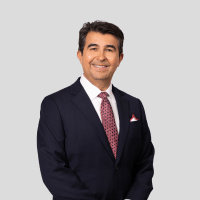
The term “slumlord” conjures images of neglected properties and landlords who prioritize profit over people. These individuals own rental properties that often fail to meet basic living standards, leaving tenants to deal with unsafe and unhealthy conditions. From leaky roofs to lack of essential amenities like heat or clean water, slumlords shirk their responsibilities, creating an environment of neglect and frustration for renters.
Unlike responsible landlords who maintain their properties and address tenant concerns promptly, slumlords cut corners to save money. They typically own multiple rundown properties in struggling neighborhoods, offering below-market rents to attract tenants while ignoring necessary repairs. This negligence not only impacts tenants’ quality of life but also contributes to the deterioration of entire communities. Understanding what defines a slumlord is the first step in recognizing and addressing this pervasive issue. For those dealing with unsafe living conditions due to landlord neglect, working with an experienced slumlord tenant rights lawyer can provide the legal support needed to demand proper housing standards.
What Is a Slumlord?
A slumlord is a landlord who prioritizes profit over maintaining safe and livable housing. Unlike responsible landlords who ensure regular maintenance and comply with housing standards, slumlords often neglect property upkeep, ignoring essential repairs like plumbing or structural damage. Their properties frequently lack basic amenities such as heat, clean water, or safe electrical systems, posing health and safety risks for tenants.
Operating in deteriorating neighborhoods or areas with housing shortages, slumlords commonly acquire rundown properties at low prices. They rent these units below market rate, attracting vulnerable tenants, such as those unable to meet traditional rental requirements. To cut costs, they avoid tenant screenings or background checks and disregard housing codes, further diminishing neighborhood quality.
Tenants renting from slumlords often experience long delays or outright refusals when requesting necessary repairs or services. For example, issues like leaking roofs or mold infestations can remain unresolved for months, creating unsafe living conditions. This neglect not only impacts tenants but also contributes to broader community decline. Understanding the practices of slumlords is vital to protect your family and improve living standards.
Spotting the Signs of a Slumlord Property
Identifying a slumlord property helps tenants protect their families and secure safer living conditions. Knowing the warning signs can change lives by ensuring individuals avoid harmful rental situations.
Structural Hazards
Poorly maintained buildings often exhibit structural hazards that indicate neglect. Cracks in walls, sagging ceilings, or unstable staircases are common issues. These conditions not only reflect a lack of care but also pose risks of injury or worse. Missing or broken locks on doors and windows compromise security, leaving tenants vulnerable. Evidence of water damage, such as stained walls or mold growth, shows an unwillingness to address underlying issues.
Neglecting proper building upkeep often results in unsafe electrical wiring. Exposed wires or flickering lights increase the potential for fires. Loose or damaged flooring, such as torn carpeting or broken tiles, further suggests disregard for tenant safety.
Health and Safety Violations
Slumlord properties frequently harbor health and safety violations that endanger residents. Infestations of pests like cockroaches, bed bugs, and rodents highlight an unwillingness to provide basic sanitation. Faulty plumbing, which can manifest as persistent leaks or a lack of clean water, jeopardizes hygiene and well-being.
Non-functioning heating or air conditioning creates unlivable temperatures during extreme weather. Overcrowded living spaces, often resulting from ignoring occupancy limits, worsen living conditions. Fire hazards, including non-working smoke detectors or obstructed fire exits, serve as additional red flags.
With constant exposure to such hazards, tenants face health risks and an overall decline in quality of life. By recognizing these signs, tenants can prioritize their well-being and advocate for safe housing.
How to Deal with a Slumlord

Addressing issues with a negligent landlord requires knowledge of your legal protections and proactive measures.
Understanding Tenant Rights
Federal, state, and local laws protect tenants from substandard living conditions. Every renter is entitled to a safe and habitable home, which includes functioning plumbing, heating, and electricity, as well as a lack of health hazards like mold or pests. Legal regulations also ensure landlords address reasonable repair requests promptly. For example, California law requires landlords to meet housing codes and remediate dangerous property conditions.
If a landlord refuses to act, tenants can document issues and escalate the situation. By keeping written records of requests, renters create evidence that may support any legal or regulatory action. If the problem persists, working with an experienced tenant rights lawyer in California can help renters take legal steps to demand repairs and hold landlords accountable. Understanding these rights empowers tenants to take necessary steps when landlords neglect their responsibilities.
Reporting Unsafe Conditions
Reporting unsafe housing protects your family and holds landlords accountable. Begin by notifying the landlord in writing, detailing the specific problems and requesting repairs. Include photos or videos that clearly show the issues, such as water damage or broken safety features. This documentation helps establish proof of the problem and your communication efforts.
When landlords ignore repair requests, contact local housing or health departments. Government agencies investigate complaints about dangerous rental properties and enforce housing standards by requiring repairs or imposing penalties. Tenants may also file formal complaints with fair housing groups or organizations supporting tenant advocacy. Taking these actions not only addresses individual concerns but may also drive community improvements.
Conclusion
Understanding the behaviors and practices of slumlords is essential for protecting tenants and promoting healthier communities. By recognizing the warning signs of neglect and advocating for tenant rights, individuals can take proactive steps to secure safer living conditions. Empowering tenants with knowledge and holding landlords accountable fosters better housing standards and benefits everyone involved.



